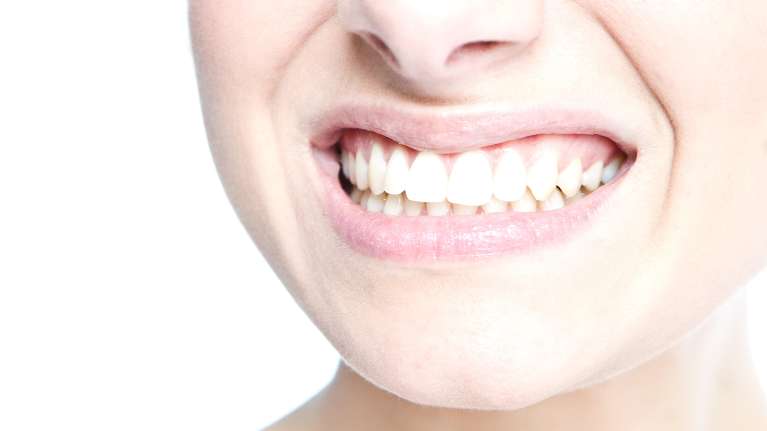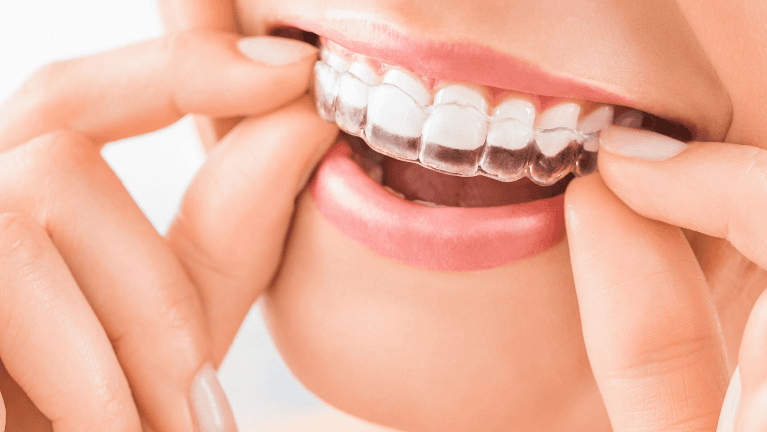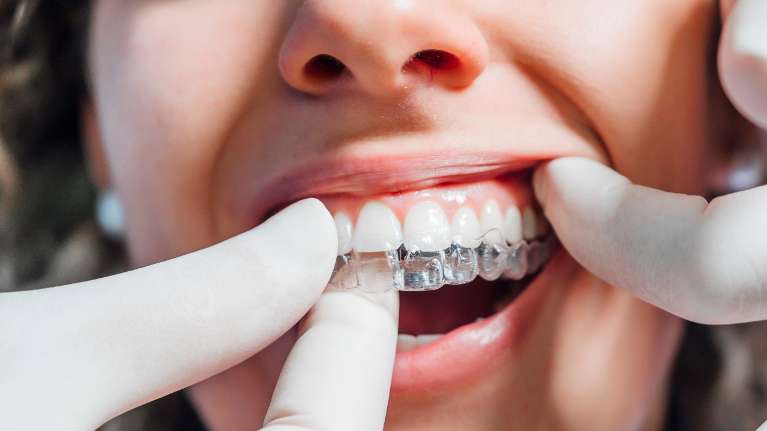
Welcome to the club !
About Invisalign, where we'll discuss the ten commandments of wearing Invisalign aligners.
Changing Your Invisalign Aligners and Full-Time Wear
Firstly, when you change your aligners over, well, we will ask you, in general, to change your aligners to new aligners every two weeks as long as you are wearing your aligners full-time. And full time means 20 to 22 hours a day, taking them out only for eating and tooth cleaning. If you wear them less than 18 hours in a day, your teeth will move in the direction we want for 18 hours and then backward for the next 6 hours you don’t have them in, so you get about half a day’s benefit at most from it. Basically, if you drop below 18 hours a day, you need to add another day to the entire process, and even at 18 hours a day, it doesn't work as well. If you’re going to get a great result with Invisalign, you need to wear your liners constantly. If there’s any stage in your treatment where you can change your aligners more often than weekly, we will tell you.
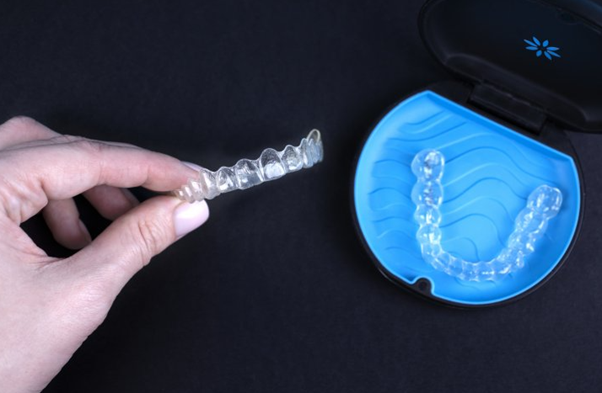
Consequences of Inconsistent Wear and the Impact on Your Invisalign Treatment
What happens if you don't wear your aligners enough? Well, here you see a picture at the bottom, there are some teeth that are not fully fitting into the aligners, there’s an air gap between the aligner and the teeth, so clearly the aligners are not gripping the teeth well enough to be able to move them, but this is generally what happens if you don’t wear your aligners well. Any less than full-time wear - 22 hours a day, will mean your treatment will take longer. We can't control how much you wear your aligners for. It will mean your treatment will not give you a good result. And to get your treatment back on track may mean extra scans, time, and cost.
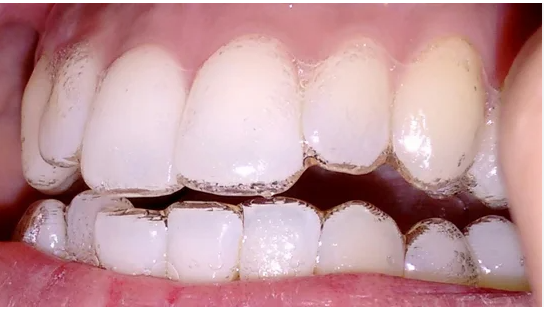
The Importance of Keeping Your Old Retainers
Thirdly, it’s a good idea to keep all your old aligners. If you keep all your old aligners, the ones you finished wearing as well, in a packet somewhere, we'll probably never ask to see them. However, there can be occasions where you lose some aligners, go away on holidays and forget to take your aligners with you, and your teeth fall backward. Sometimes we can use one of the older aligners to get your treatment back on track. So please keep all your old aligners. At the very least, we ask you to keep the aligners prior to the ones you’re currently wearing. So, the one previous set at least is a good idea. So, we have a full back-up plan if you were to lose your current set.
Dealing with Irritation and Allergic Reactions
What about irritation from aligners? You can trim your aligners lightly with a nail file or an emery board if you find they are causing any irritations. This is extremely rare. It rarely happens at all, maybe one in a hundred aligners might be a little irritating, might be even less than that. And if it’s the case, we can trim them for you, but it’s probably a simple job to do just with a nail file or emery board. The chances of anybody having an allergic reaction to aligners are less than one in a million. So that’s pretty rare. And people ask questions naturally enough about speaking.
Adapting to Speaking with Invisalign Retainers
Adaptation is easy and generally takes less than two days. The only reason that speaking with the aligners then becomes difficult as if you don’t have your aligners in. I have had patients who sing for a living, who sing with their aligners in. I have had patients who are news readers, who read the news with their aligners in. Many people in the public eye wear aligners and do not have problems with speaking. Therefore, this is not a problem for anybody. In the first hour, when you do have your aligners in your mouth for the first time you will salivate more because your body thinks that something new in your mouth is food and it turns your salivary glands on. However, after an hour your body decides that it's not food anymore and it stops salivating as much. So, for one hour you will salivate more.
Why May Invisalign Aligners Feel Loose
What about if you feel your aligners are loose? Well, just because the aligners feel loose, don’t change them. They may be loose because you are not wearing them well enough and they are not fitting in the first place. But they may be loose for a good reason. And I use the analogy of Jane Fonda, the movie star and exercise guru who made popular the phrase ‘no pain no gain’. Many people expect that orthodontic treatment will cause them pain and discomfort, and when it doesn’t cause them pain and discomfort, they think it’s not doing anything and they want to change their aligners because the aligners aren’t feeling tight and uncomfortable. That is not actually what is correct. What happens when you first put on an aligner is it accelerates your teeth to move to a new direction. Just as you were to jump into a car from nought to 60 kilometers an hour. However, once you’re up and traveling at 60 kilometers an hour, you don’t really feel it. So, moving your tooth is the same thing. We need to accelerate it by putting in a new aligner to up the speed and then spend the time traveling the distance before we need to push the accelerator again.
Understanding the Invisalign Attachments
What about attachment? Attachments are little tooth-colored pieces of plastic that are glued onto the teeth and removed at the finish. Invisalign treatment does not mean just wearing the pieces of plastic, the aligners themselves. Very frequently we add tooth-colored attachments to your teeth, either on the inside of the teeth or on the outside front and back teeth. Quite commonly, these are placed on front teeth. We keep this process to an absolute minimum, but you need to understand and accept that we do this for the best of reasons – to actually get
your teeth really straight. If you don’t have attachments, you'll not have straight teeth if attachments are required.
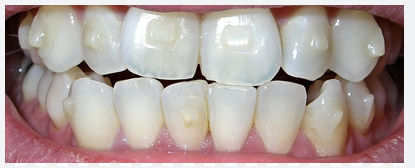
What to Expect with Invisalign Treatment Duration and Why It Varies
This will vary from person to person. When you get your aligners, there’ll be a number, a total on the packaging. But don’t take that number as the absolute final number. In about two thirds of cases, we will order some more aligners at the finish to get a really perfect result because we can’t tell whether you have been a good wearer or a bad wearer, or something minor may go wrong along the way. So about two thirds of the time, when we get towards the finish, we'll organize some more aligners to fine-tune the result. If you wear your aligners well and report non-fit of teeth into the aligners or other problems as soon as possible, your treatment will progress as quickly as possible.
Changing Aligners at Night
Change your aligners to new ones just before you go to sleep. That way, your aligners are settled in overnight and are much more comfortable. Studies have shown that about 70 percent of the stiffness and discomfort with the aligners will disappear in the first ten hours. So, if you take that 10 hours during a time when you’re actually asleep you’ll find its much more comfortable. So, the best thing to do, change new aligners just before you go to bed at night every two weeks.
Embracing Your Invisalign Journey
And finally enjoy your treatment. It is simply the best way out there to get you a great new smile. Aligners are reported in reputable scientific studies to provide about one-tenth the discomfort of braces in the first six weeks of treatment. And for any of you who have had braces or have had friends with braces on or children, you will know that they complain quite a deal of discomfort whereas with Invisalign it’s pretty minimal. Further, they don’t prevent you from brushing your teeth or eating as you wish because you take them out for those things. So, life is good while your teeth get straighter as long as you wear your aligners well. If you have any questions, please call us, or book a consultation at our Paddington Dentistry clinic, and we’ll be happy to answer them for you.
